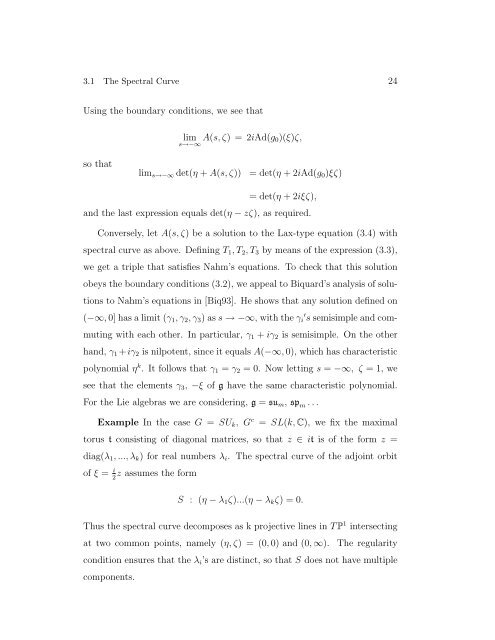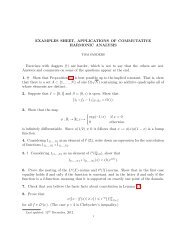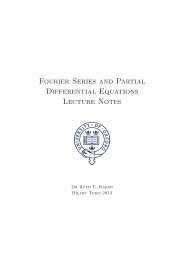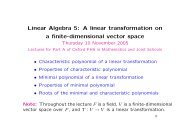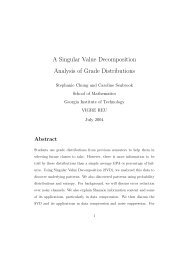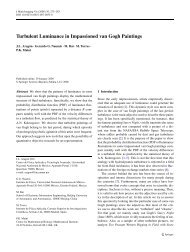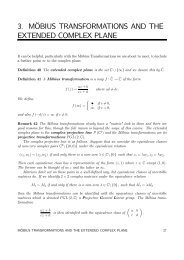Construction of Hyperkähler Metrics for Complex Adjoint Orbits
Construction of Hyperkähler Metrics for Complex Adjoint Orbits
Construction of Hyperkähler Metrics for Complex Adjoint Orbits
Create successful ePaper yourself
Turn your PDF publications into a flip-book with our unique Google optimized e-Paper software.
3.1 The Spectral Curve 24<br />
Using the boundary conditions, we see that<br />
so that<br />
lim A(s, ζ) = 2iAd(g0)(ξ)ζ,<br />
s→−∞<br />
lims→−∞ det(η + A(s, ζ)) = det(η + 2iAd(g0)ξζ)<br />
= det(η + 2iξζ),<br />
and the last expression equals det(η − zζ), as required.<br />
Conversely, let A(s, ζ) be a solution to the Lax-type equation (3.4) with<br />
spectral curve as above. Defining T1, T2, T3 by means <strong>of</strong> the expression (3.3),<br />
we get a triple that satisfies Nahm’s equations. To check that this solution<br />
obeys the boundary conditions (3.2), we appeal to Biquard’s analysis <strong>of</strong> solu-<br />
tions to Nahm’s equations in [Biq93]. He shows that any solution defined on<br />
(−∞, 0] has a limit (γ1, γ2, γ3) as s → −∞, with the γi ′ s semisimple and com-<br />
muting with each other. In particular, γ1 + iγ2 is semisimple. On the other<br />
hand, γ1 +iγ2 is nilpotent, since it equals A(−∞, 0), which has characteristic<br />
polynomial η k . It follows that γ1 = γ2 = 0. Now letting s = −∞, ζ = 1, we<br />
see that the elements γ3, −ξ <strong>of</strong> g have the same characteristic polynomial.<br />
For the Lie algebras we are considering, g = sum, sp m . . .<br />
Example In the case G = SUk, G c = SL(k, C), we fix the maximal<br />
torus t consisting <strong>of</strong> diagonal matrices, so that z ∈ it is <strong>of</strong> the <strong>for</strong>m z =<br />
diag(λ1, ..., λk) <strong>for</strong> real numbers λi. The spectral curve <strong>of</strong> the adjoint orbit<br />
<strong>of</strong> ξ = i z assumes the <strong>for</strong>m<br />
2<br />
S : (η − λ1ζ)...(η − λkζ) = 0.<br />
Thus the spectral curve decomposes as k projective lines in T P 1 intersecting<br />
at two common points, namely (η, ζ) = (0, 0) and (0, ∞). The regularity<br />
condition ensures that the λi’s are distinct, so that S does not have multiple<br />
components.


